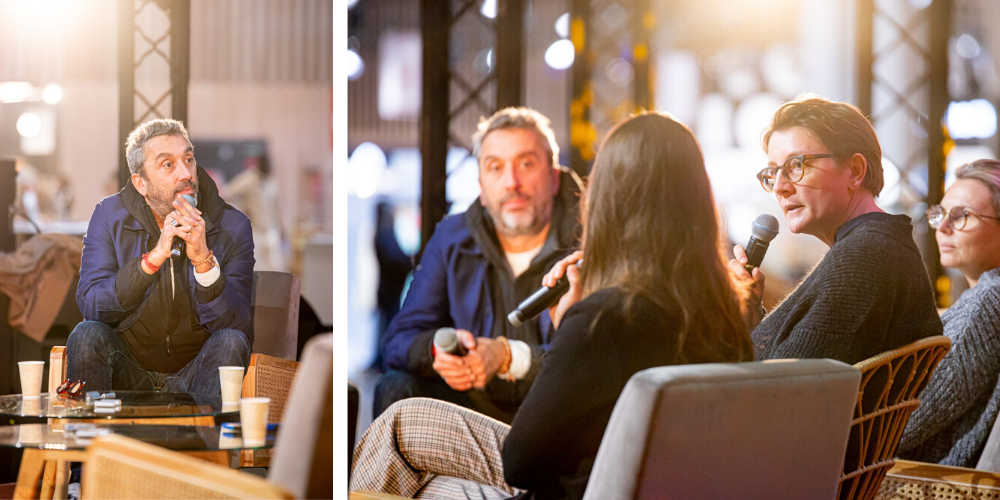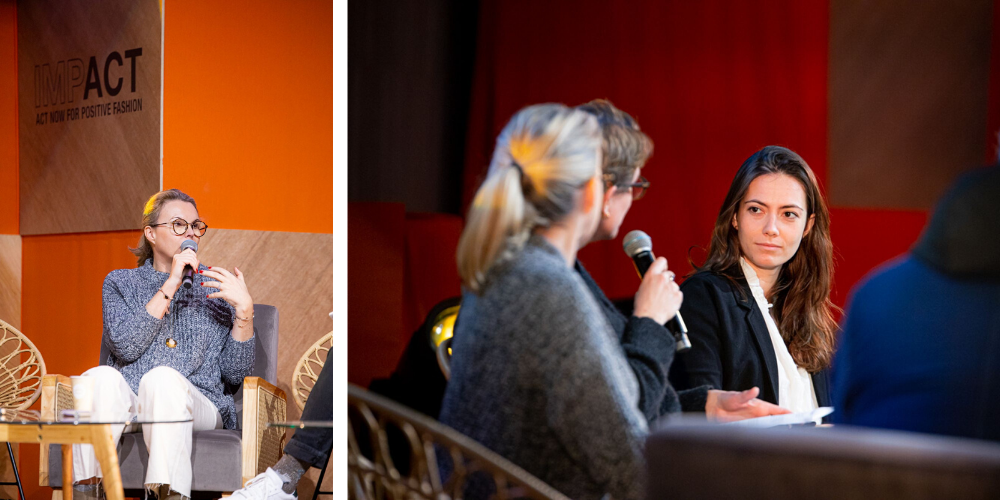THINK GREEN
Trends
Impact Talk: "It is time for a call to order, to raise awareness and take part in collective action"
Sustainability. If a word can be in fashion, the adjective ‘sustainable’ is certainly an ‘it-word’: ‘the word to say’, ‘the principle to embody’. This term, which is at first glance not associated with entertainment, nor exuberance, has indeed succeeded in conquering the media as well as the masses. According to the Cambridge dictionary, ‘sustainability’ guarantees not harming the environment. Today, it also invokes a broader sense of respect for humankind and social rights. How then, did fashion, paragon of the beautiful, the visionary and the great, fall in love with this term with an almost pascalian resonance? How did this enormous industry, dominated by a capitalist mindset, more or less cry out for the art of balance? A single possible response: reality. These last decades have been marked by a more than brutal return to reality, heralding an era of disillusionment. Global warming, an exhausted economic model, and worldwide social crises are signs of the failure of a globalised system, which is motivated by overproduction and the principle of ‘money money money’. It is time for a call to order, to raise awareness and take part in collective action. In 2020, whether we like it or not, reality tends to be ‘environmentally responsible’. This new issue facing the fashion industry was the subject of discussion amongst Nathalie Lebas Vautier of Good Fabric, Laure Betsch from Fairly Made, and Philippe Corbin, founder of Leon & Harper, moderated by journalist Céline Vautard.

For several years, the fashion industry has been vowing to become more sustainable, more ethical - more responsible. But today, faced with a failing economy, growing media exposure and new consumer trends, it has no choice but to renew itself. The principle of
environmental responsibility is indeed becoming central for the fashion and textile industry in particular. High-end fashion, couture, ready-to-wear and streetwear: they are all following the trend. Green fashion is constantly growing and attracting consumers who are increasingly inclined to consume better. The famous motto of our grandmothers, “less but better”, finally seems to be catching on. The takeaway: always listen to your elders.
An environmentally responsible collection therefore, is based on three pillars; the environment, the social, and the ethical, recalls Laure Betsch, founder of Fairly Made, which is a clothing sourcing and production enterprise which promotes fair manufacturing. Sustainable development, sustainable agriculture and social responsibility are all necessary factors in order to successfully grasp this model, which is not in itself a simple feat. “There is a great phase of reflection - communication, marketing, e-commerce… - in order to find the story which we want to tell and to attract our target audience,” continues Laure Betsch. The manufacturing of an environmentally friendly collection or brand therefore takes time. It requires an initial phase of conception; to think of the brand, its contents and its manifesto - then its creation, realisation and production. Even the marketing and communications campaigns in order make sure it sells. “The sourcing component is fundamental within these different steps. One must choose materials with a reduced environmental impact and find the right sourcing industries,” concludes the Fairly Made founder.

However, this commitment goes even further for certain brands who stand for a more radical and innovative model. The Californian brand, Patagonia, which is a leader of the ‘sustainable’ movement, is a perfect example of a responsible yet lucrative fashion industry. Its objective is clear: to save the planet. From the beginning, the brand has used its clothes and communication campaigns as manifestos in defence of the environment, never hesitating to self-censor its own products by asking a simple question: do you really need them? A radical but very effective message, since the brand’s best-selling piece is also its most self-censored. Sustainable fashion: it’s also a case of the snake which bites its own tail.
“Environmental responsibility means eliminating all which is not essential,” seems to confirm Nathalie Lebas-Vauthier, founder of Good Fabric, an eco-design workshop which collaborates with labels, big brands and companies in order to create, develop and make sustainable collections and textile products. This is an idea supported by Philippe Corbin, founder of the brand, Leon & Harper: "Overall, we have to do everything less: produce less, consume less. The change will therefore come from brands, but also from consumers, who must adapt their purchasing behaviours in order to truly change the industry. The patterns of reduced consumption recorded over the last few years also seem to nod towards environmentally responsible fashion. For example, in 2018, 44% of consumers bought fewer clothes, and for 40% of them, it was a conscious reduction of their consumption, according to an IFM study. This phenomenon reveals not only an undeniable awareness on the part of the consumer, who is increasingly well informed of the reality of the actions of a previously opaque industry, but also a growing mistrust of fashion companies. Transparency has become a necessary tool in order to open up dialogue between brands and their customers. Information and raising awareness are key pillars for brands which want to launch themselves into the sphere of environmental responsibility.
"Environmental responsibility has become fashionable. However, it should be the other way around: fashion should become environmentally responsible," concludes Philippe Corbin resolutely. If green fashion is more than just a trend today, it is necessary to consolidate the momentum built up by the industry in previous years. Brands and large companies must be prepared to invest in this model. The current fashion industry is therefore combined with the future. It sees itself as sustainable, perennial, even timeless, even if this means defying the laws of fast fashion. Responding to the needs and demands of all, it seeks to minimise resource waste and promote a long cycle. Moreover, it seeks to give clothes a second life. By adapting itself to new demands brought by climate change, and by ensuring the well-being of future generations, fashion, thus no longer lives only in the cult of pleasure and the present moment. In 2020, fashion becomes reasonable.